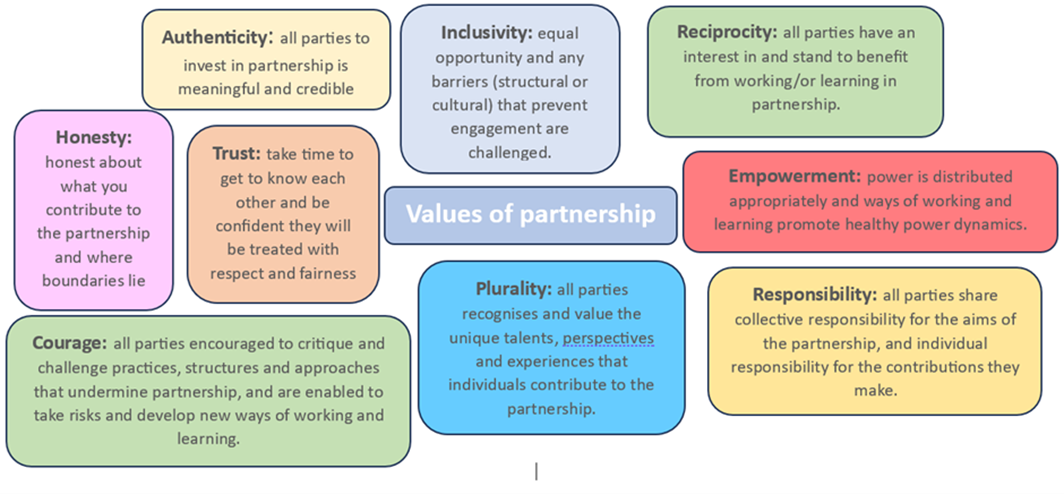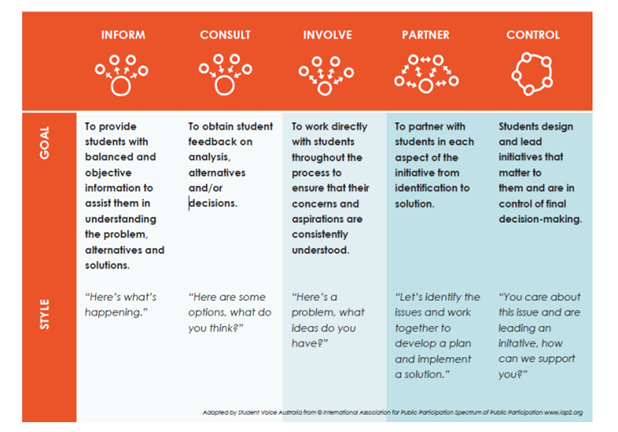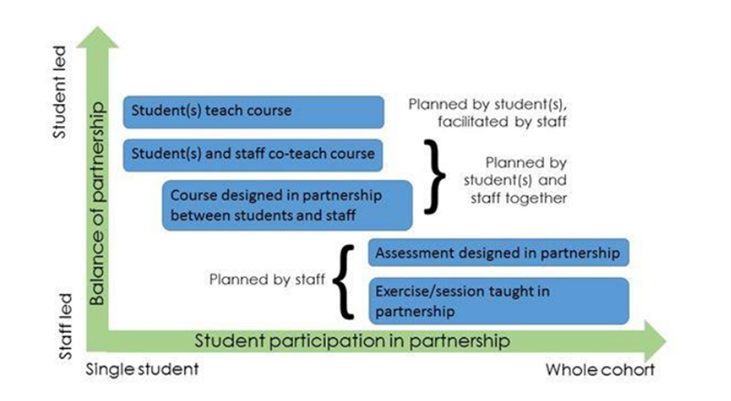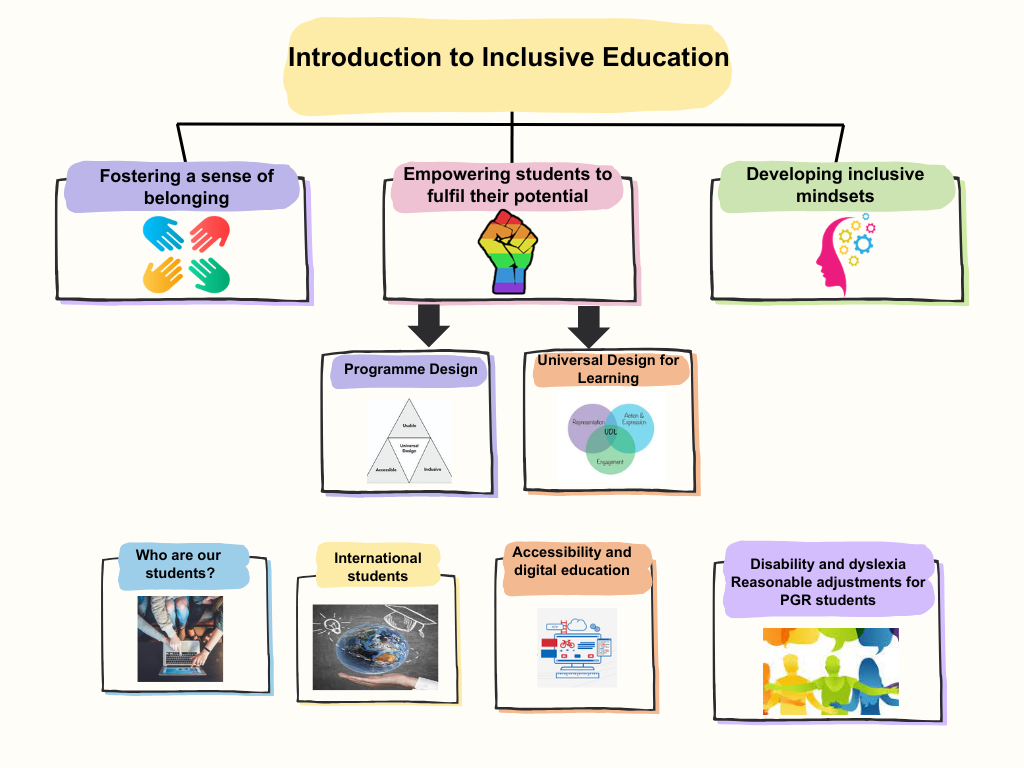Student collaboration and co-creation
Engaging students in co-creation
Co-creating learning experiences with students increases ownership and belonging. Collaborative teaching and learning approaches allow students to contribute their unique backgrounds and perspectives, enriching our academic community. To build an inclusive environment we need to apply culturally responsive teaching strategies, such as recognising and valuing students’ unique backgrounds and experiences, and the impact of this on their learning.
Advance HE’s values of partnership are particularly helpful when considering drawing on the diversity of the community:

Figure 2: Advance HE’s values of partnership (Advance HE 2019)
It can be helpful to think of Student Engagement in terms of increasing levels of student control, as indicated by Healey and Healey (2019):

Figure 3: Levels of Agency in Student Engagement Activities (Healey and Healey 2019, from Student Voice Australia)
Working in partnership with students enables staff to use a range of methods, working with individuals with particular needs, or groups of students who experience particular barriers to learning, or whole cohorts of students, to develop practice. The figure below provides examples of different types of student-staff partnerships in relation to designing, teaching and assessing the curriculum.

Practical strategies for inclusive student engagement:
- Tools like Mentimeter: Gather real-time feedback during lectures, promoting active participation.
- Student advisory panels: Regular feedback channels that incorporate diverse student perspectives.
- Co-created assessments: Involving students in assessment design fosters inclusivity and respects diverse learning styles (Nelson & Kift, 2005).
Actively listening to student voices
Frequent feedback promotes a shared sense of community and continuous improvement. Listening actively to student feedback allows us to refine our teaching and support approaches.
Reflective tools and activities:
- Feedback tools: Use methods like “Stop, Start, Continue” or “Minute Papers” for immediate feedback.
- Anonymous surveys: Encourage honesty and inclusivity by collecting insights confidentially.
Evaluation
Evaluation is essential for fostering inclusivity and continuously improving teaching practices. By gathering diverse feedback through both formal and informal tools, educators address actual barriers rather than assumed challenges (King & Evans, 2007).
Informal evaluation tools:
- 2 Stars and a Wish: Two positive aspects and one suggestion for improvement.
- Stop, Start, Carry On: Identify actions to stop, start, and continue.
- Minute Papers: Quick reflections on learning and outstanding questions.
- Muddiest Point: Identifying confusing aspects to target clarification.
- Think-Pair-Share: Collaborative discussions that enhance engagement.
Recommendations for considering diversity in evaluations:
- Inclusive Question Design:
- Ensure questions are open-ended and allow for diverse perspectives.
- Avoid jargon or culturally specific references that may not be understood by all students.
- Anonymity and Confidentiality:
- Use anonymous feedback tools to encourage honest responses from all students, especially those from underrepresented groups.
- Multiple Feedback Channels:
- Provide various ways for students to give feedback (e.g., written, verbal, digital) to accommodate different communication preferences and abilities.
- Cultural Sensitivity:
- Be aware of cultural differences in communication styles and feedback preferences.
- Adapt evaluation methods to be respectful and inclusive of all cultural backgrounds.
- Regular Reflection and Adjustment:
- Continuously reflect on the feedback received and adjust teaching methods to better meet the needs of a diverse student body.
- Engage in professional development on inclusive teaching practices
Action research
Action research is a methodology for small-scale inquiry based research, with student voice at the centre, and therefore is an ideal model for actively seeking, listening to and responding to diverse voices, to make improvements to practice. You can find out more on these pages on reflection and evaluation.
Where Next
Map of Topics
Below is a map of the toolkit and workshop topics, to aid your navigation. These will be developed and added to in future iterations of this toolkit.

You’re on page 3 of 9 Inclusivity theme pages. Explore the others here:
1.Inclusivity and the CU Inclusive Education Framework
2.Introduction to Inclusive education
3. Fostering a sense of belonging
4.Empowering students to fulfil their potential
5.Developing Inclusive Mindsets
6.Universal Design for Learning